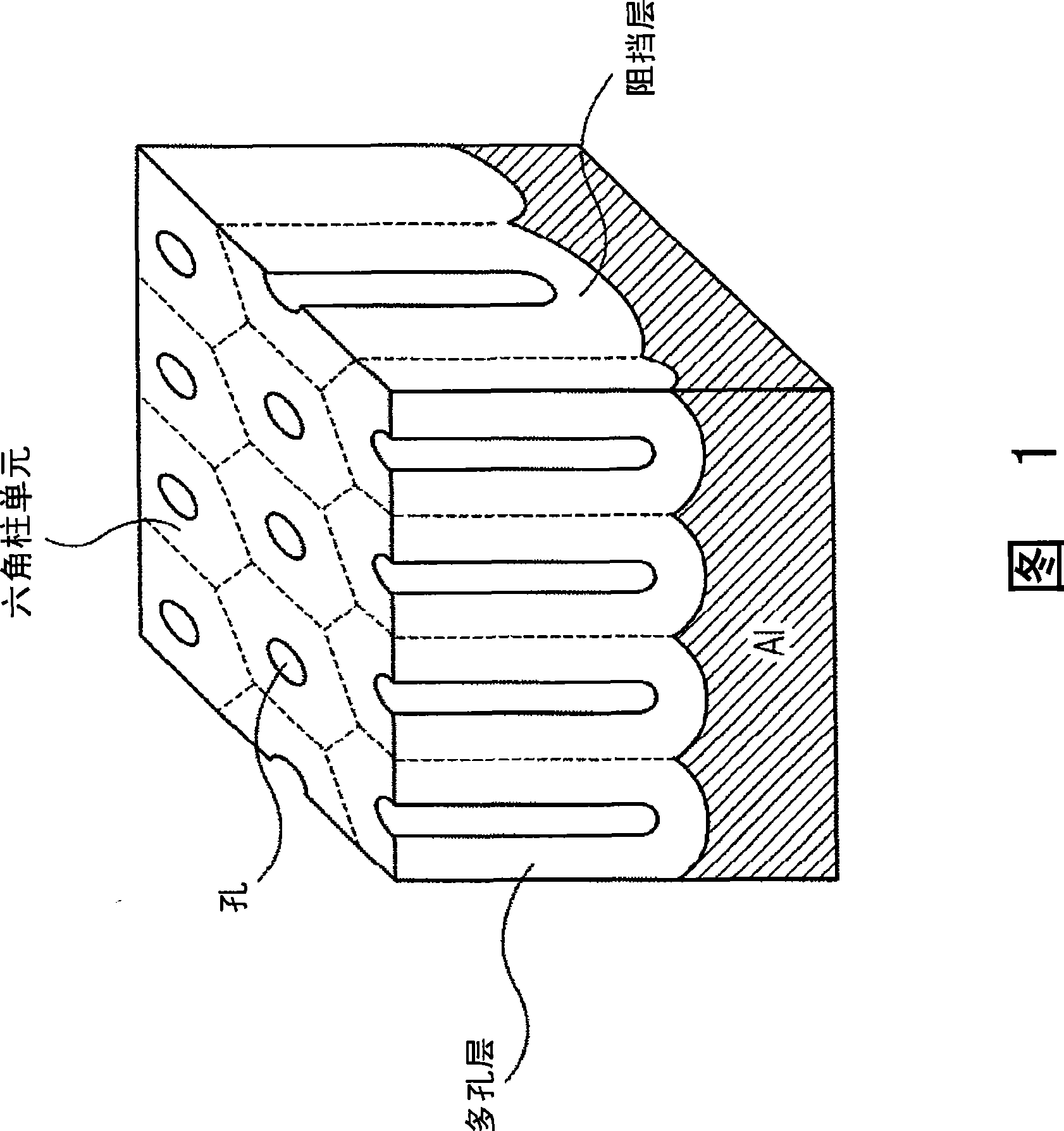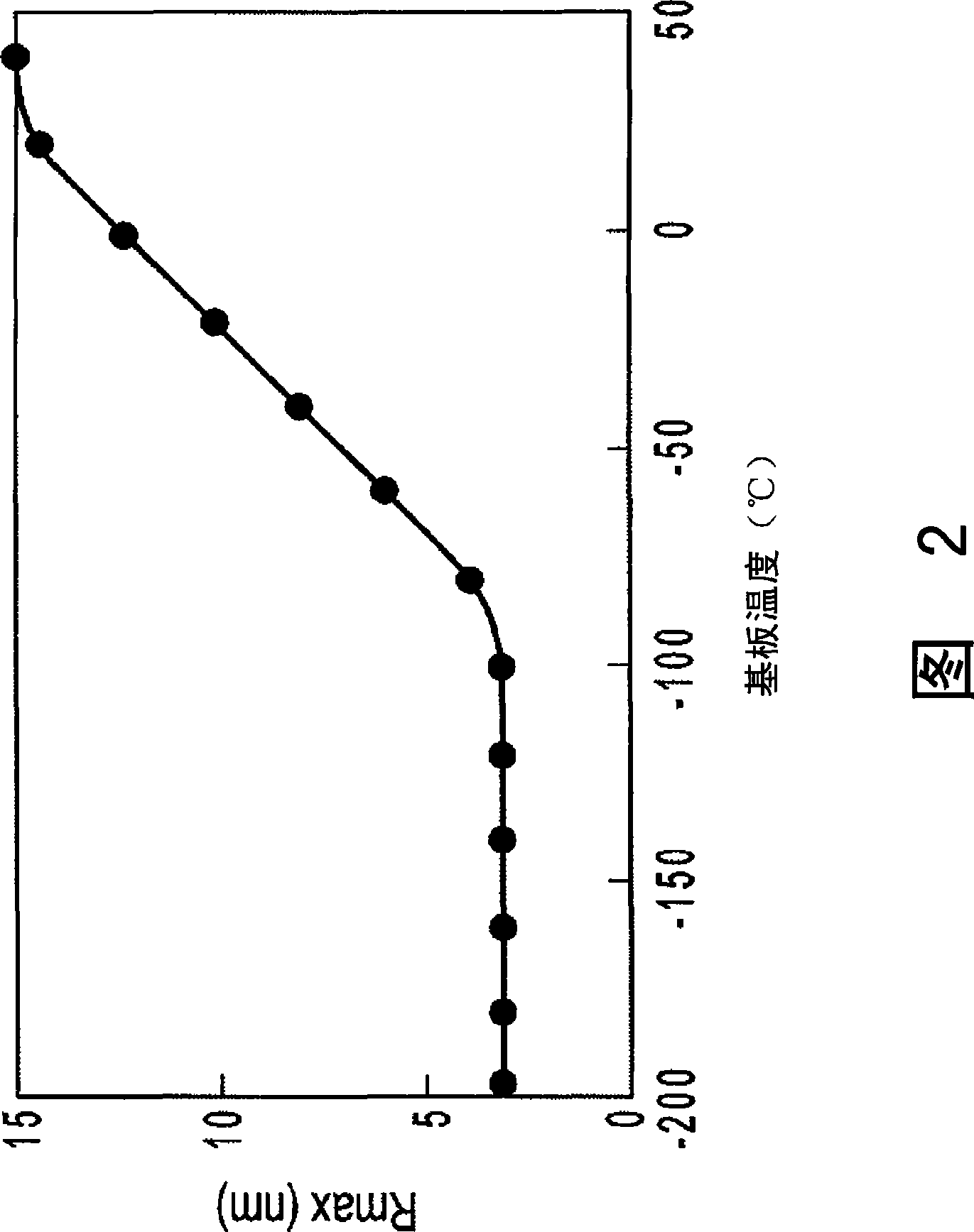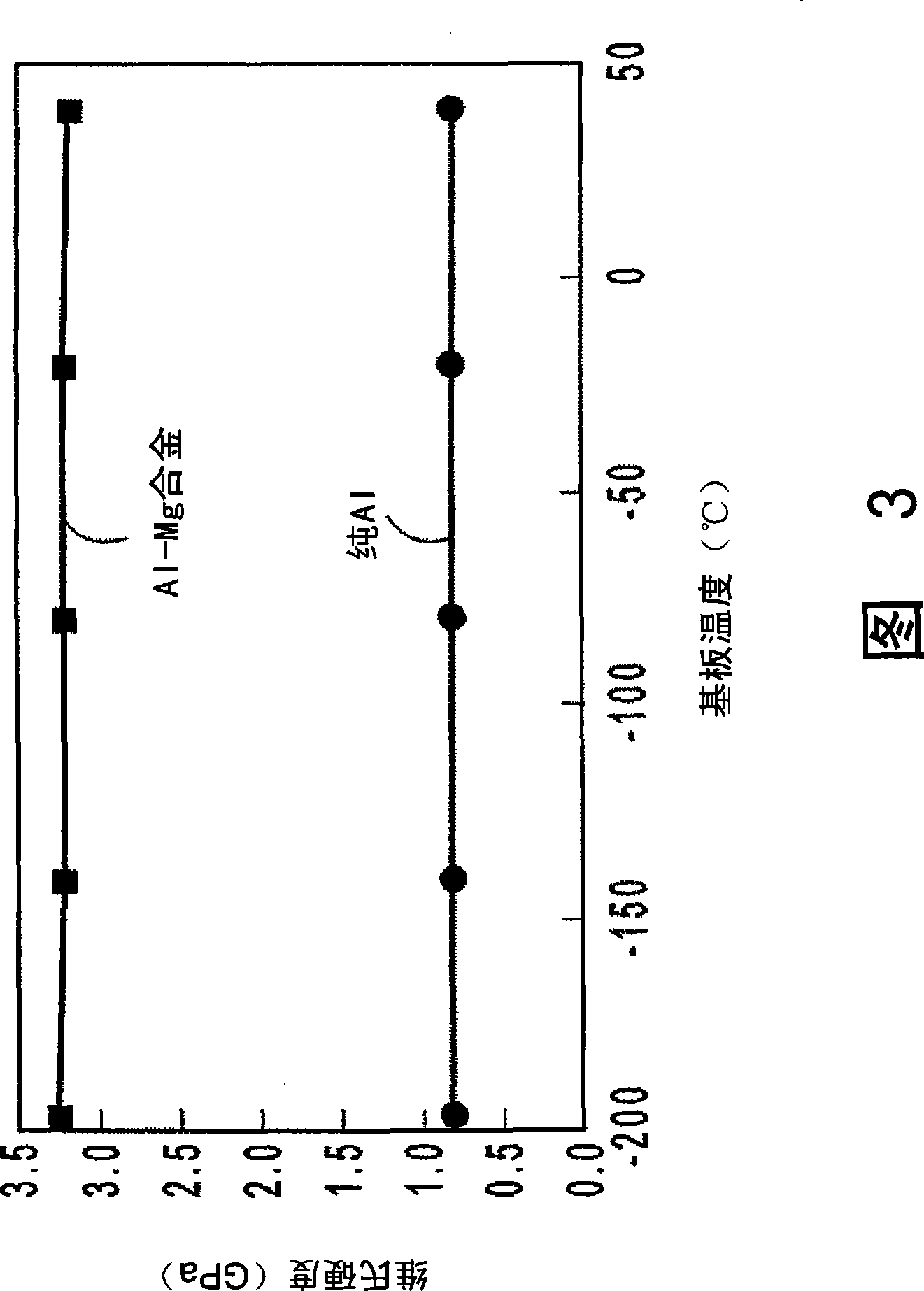Method of fabricating an alumina nanohole array, and method of manufacturing a magnetic recording medium
A kind of technology of alumina nanometer and manufacturing method, which is applied in the field of manufacturing alumina nanohole array, which can solve the problems of shortening the life of die or mold
- Summary
- Abstract
- Description
- Claims
- Application Information
AI Technical Summary
Problems solved by technology
Method used
Image
Examples
example 1
[0096] Aluminum film production
[0097] The aluminum thin films used in the following examples were produced as follows.
[0098] In a sputtering apparatus having a substrate mounting stage equipped with a temperature control system consisting of a liquid nitrogen feeder and a heating mechanism, a 2.5-inch monocrystalline silicon substrate was mounted on the substrate stage, and placed on various substrates Film formation is performed at a temperature. The aluminum target used for film formation had a diameter of 6 inches and a purity of 99.99%. The film formation conditions were set to a film formation time of 60 seconds and an aluminum film thickness of 100 nm.
[0099] FIG. 2 shows the measurement results of the maximum surface roughness (Rmax) of aluminum thin films produced at substrate temperatures ranging from -196°C (liquid nitrogen temperature) to 40°C. At a substrate temperature of -80°C or lower, Rmax is about 3 nm, from which it can be found that it is possible...
example 2
[0102] Correlation between Vickers Hardness of Aluminum Thin Film and Substrate Temperature
[0103] Under the conditions shown in Example 1, for a pure aluminum thin film (example according to the present invention) with a film thickness of 100 nm produced at a substrate temperature of -196°C and to use Al-Mg (8 wt% Mg) The Vickers hardness and The temperature dependence was studied. The results are shown in FIG. 3 .
[0104] The Vickers hardness was found to be substantially constant independent of the substrate temperature. In the thin film obtained in the example of the present invention using pure aluminum, the Vickers hardness was about 0.78 GPa. In contrast, in the thin film obtained in the comparative example using the Al-Mg alloy (8 wt% Mg), the Vickers hardness was 3.1 GPa, four times that of the thin film made of pure aluminum. Also, in the latter case, the Vickers hardness does not substantially change with the substrate temperature.
[0105] These results dem...
example 3
[0108] Correlation of Vickers Hardness of Aluminum Thin Films with Pit Formation (Texture Formation) Temperature
[0109] Correlation of Vickers hardness with pit formation (texturing) temperature for films produced according to the present invention using pure aluminum in Example 2, and for films produced using Al-Mg (8 wt% magnesium) alloy according to Comparative Example gender research. The results are shown in FIG. 4 .
[0110] In the Al-Mg thin film, the Vickers hardness does not decrease even when the temperature is raised to 200°C. In contrast, when an aluminum thin film is produced from pure aluminum at a substrate temperature of -196°C according to the present invention, the Vickers hardness suddenly decreases at 100°C or higher, and becomes room temperature Vickers at a temperature of 150°C to 200°C. About 50% of the hardness value.
[0111] Based on this data, when the molding was performed while maintaining the dimple-forming stamper and a pure aluminum film wi...
PUM
| Property | Measurement | Unit |
|---|---|---|
| Vickers hardness | aaaaa | aaaaa |
| purity | aaaaa | aaaaa |
| current density | aaaaa | aaaaa |
Abstract
Description
Claims
Application Information
 Login to View More
Login to View More - R&D
- Intellectual Property
- Life Sciences
- Materials
- Tech Scout
- Unparalleled Data Quality
- Higher Quality Content
- 60% Fewer Hallucinations
Browse by: Latest US Patents, China's latest patents, Technical Efficacy Thesaurus, Application Domain, Technology Topic, Popular Technical Reports.
© 2025 PatSnap. All rights reserved.Legal|Privacy policy|Modern Slavery Act Transparency Statement|Sitemap|About US| Contact US: help@patsnap.com



